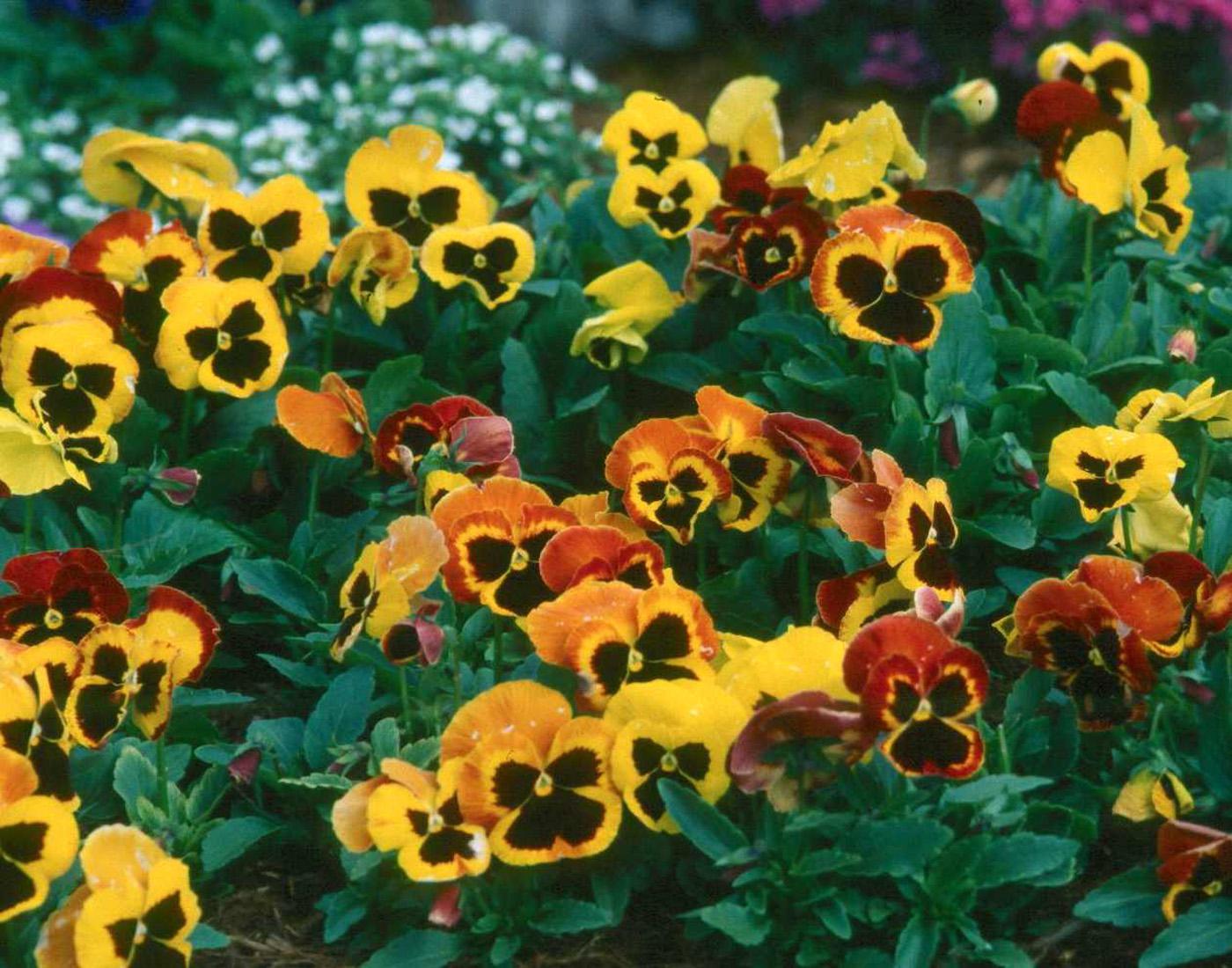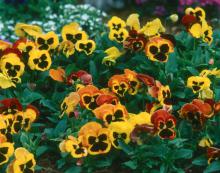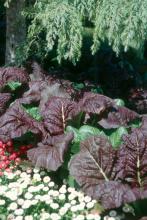Information Possibly Outdated
The information presented on this page was originally released on October 21, 2002. It may not be outdated, but please search our site for more current information. If you plan to quote or reference this information in a publication, please check with the Extension specialist or author before proceeding.
Red Giant and Delta Fire make a winning combo
By Norman Winter
MSU Horticulturist
Central Mississippi Research & Extension Center
Fall and winter gardens need color to liven up landscapes, and local garden centers are loaded with great new selections that will do just that.
If you haven't tried Redbor kale or Red Giant mustard, then you have missed some of the best. Look also for new pansies like Ultima Apricot Shades or Delta Fire.
Redbor kale is a large selection producing wavy, deep burgundy leaves. Red Giant mustard produces foliage in burgundy and green that is beautiful and edible.
Now is the ideal time to get them planted while it is cool but not freezing. This gives them time to get acclimated to your garden so they can put on their show from now through spring. Once acclimated to cool weather, kale and cabbage can withstand temperatures in the mid-teens. The Chicago Botanic Garden has actually seen them survive minus 10 degrees.
Select a site in full sun with fertile, organic-rich soil. If the planting area has tight, heavy clay, amend with compost or humus to loosen. While preparing the soil, incorporate two pounds of a slow-release, 12-6-6-fertilizer with minor nutrients per 100 square feet. Set out nursery-grown transplants in the fall 12 to 18 inches apart and add a layer of mulch. In northern regions, they also can be planted in early spring.
Keep kale, cabbage or mustard growing vigorously with supplemental water during dry, cold periods and light applications of the fertilizer every four to six weeks. Should abnormally cold weather be forecast, completely cover with a layer of pine straw and remove once temperatures have moderated.
The real enemy of flowering kale is warm, fall weather followed by horrific cold. Cabbage loopers also can be a problem, but these are easily controlled with the organic insecticide Bt, or Bacillus thuringiensis.
Both the mustard and Redbor kale, which also comes in a white selection called Winterbor, offer a lot of choices for companion plants. For a recent "Southern Gardening" TV segment, we combined the Redbor with the hot new Ultima Apricot Shades pansy and Ice Follies daffodil. Ultima Apricot Shades produces flowers that are creamy with blushes of burgundy and rose.
Snapdragons also would work well, and the new dwarf series Montego may be the best. Montegos come in several colors and are actually smaller than the kale. If you want a taller selection, then try the Ribbons or the Sonnets.
For another "Southern Gardening" segment, we used the Red Giant mustard with the new Delta Fire pansy and Tahiti daffodil. Delta Fire pansies have flowers that are brilliant yellow with shades of burgundy to rust. Yellow Sonnet or Liberty snapdragons offer great opportunities for combination plantings.
Ornamental grasses and fall chrysanthemums also make great companion plants. Try the kale with purple fountain grass, dwarf pampas or the dwarf fountain grass variety Hameln. Yellow Jacket chrysanthemums would be exceptional with the Red Giant mustard.
Shop now while selections are greatest and temperatures are moderate. The winter landscape doesn't have to be dreary. Redbor kale, Red Giant mustard and pansies like Ultima Apricot Shades or Delta Fire are just a few of the great choices waiting for you.




